River interlinking can affect the Indian Monsoon
Published in Earth & Environment

India’s mounting water crisis.
Recent UN projections show India surpassed China to become the world’s most populated country, with more than 1.4 billion people. Rising population, economic growth, pollution, and migration, coupled with the effects of global warming, are rapidly increasing the water demand in India. This presents an unprecedented challenge in front of the water resource managers of the agriculture-dominant country. As per the Central Water Commission of the country, a significant portion of the population is already water stressed. The per capita availability of water is slated to reduce from the current estimate of 1400 cubic meters to around 1200 cubic meters by 2050. A large fraction of India’s water resources is used for agriculture. The demand for water will further increase with rising extremes and intensification of agriculture, and within the next few decades, India might need most of its surface runoff to meet its urban and agricultural needs.
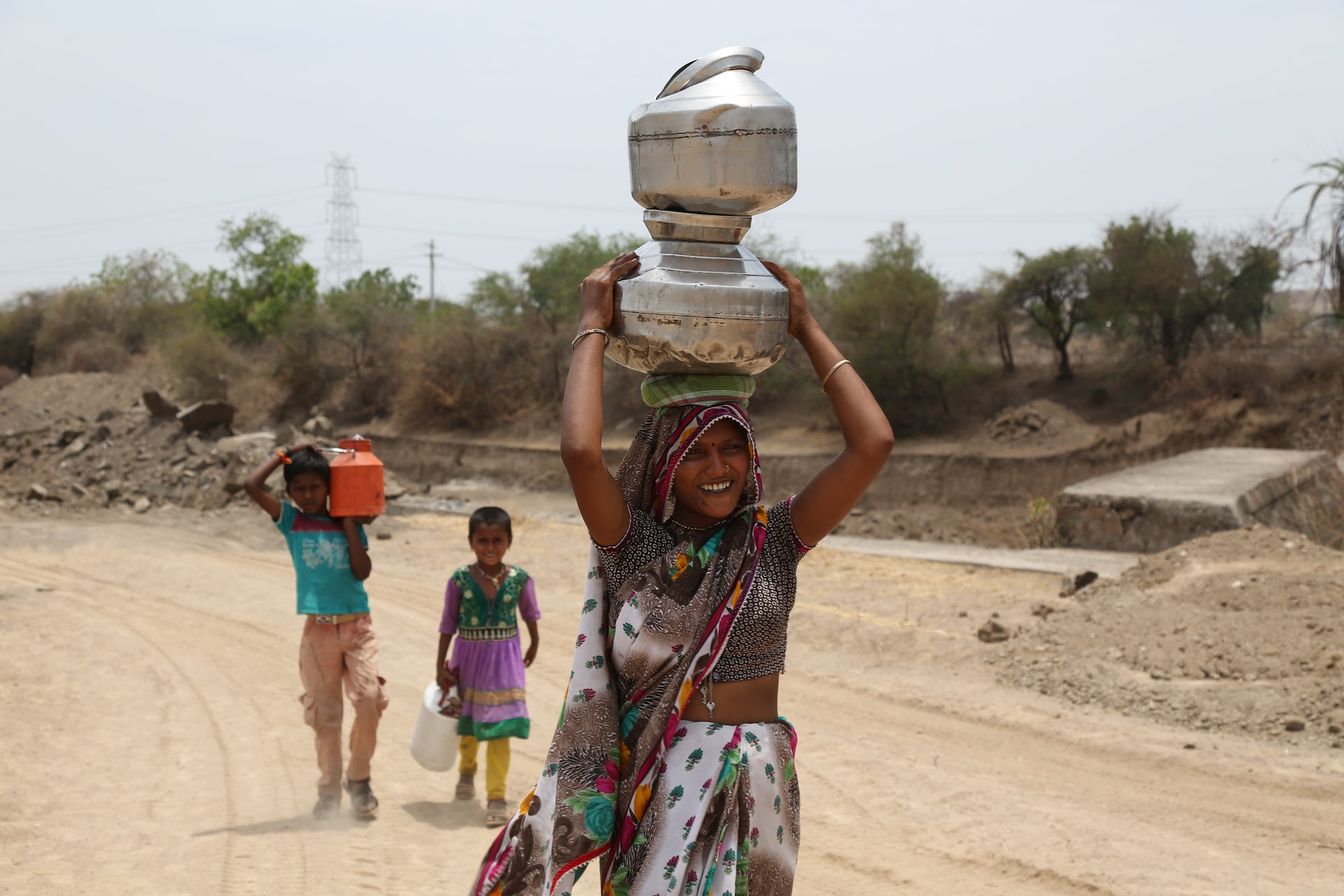
An ambitious solution: Interlinking of Rivers (ILR)
India’s average annual surface run-off is about 1869 billion cubic meters (BCM), which should be more than sufficient to meet the rising water demand of the country. However, currently, we can utilize only about 37 percent of this surface water because most of it is received during the monsoon season (June - September), and there are limited storage options. The remaining 60% gets drained into the oceans. To maximize the water storage and utilization on land, India has planned to connect its river basins through a network of 15000 km of canals and 3000 reservoirs to facilitate water transfer from surplus to deficit basins across the country. The projects will have a capacity to annually transfer 174 billion cubic meters of water. This ambitious USD 168 billion project will facilitate water supply to previously dry regions increasing the irrigated area across the country by a staggering 30 million hectares while delivering other benefits. While there is no denying that these state-of-the-art projects hold the potential to mitigate India’s heaping water scarcity and increase agricultural yield, there is very little known about their eco-hydrological and environmental consequences.
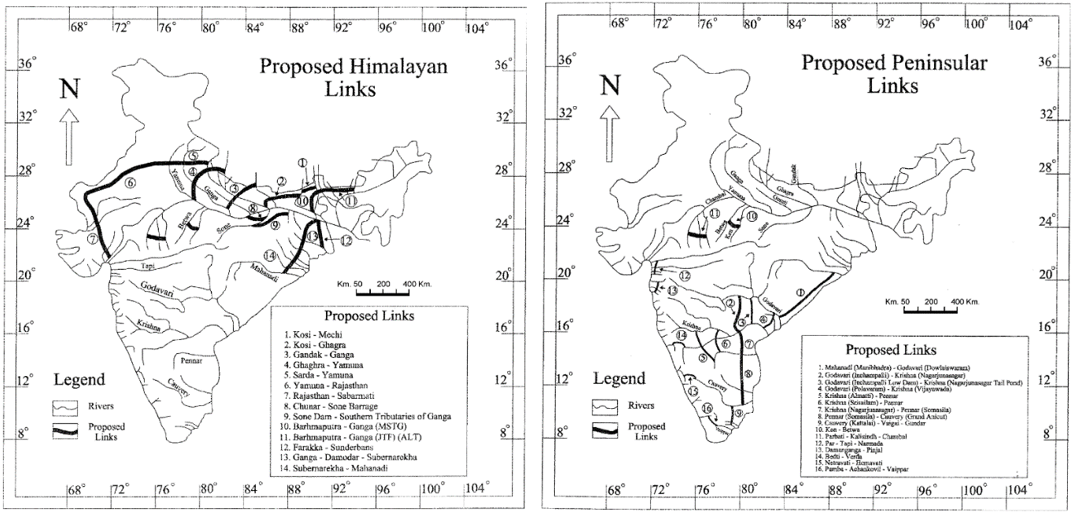
What is land-atmosphere feedback?
The exchange of energy and matter between the land surface and the overlying atmosphere can modulate large-scale atmospheric processes. This is called the land-atmosphere feedback. For example, an increase in aerosols can cause the cooling of land, which has been demonstrated to affect the Indian monsoon by changing the land-sea thermal contrast. Irrigation can also have similar land-atmosphere feedback. It is an important component of the hydrological cycle and is known to shape the spatial variability of the Indian summer monsoon (ISM). Hence, it can modulate the water availability in different river basins of India and hydrological extremes like floods and droughts. Evapotranspiration from land increases the water content of air, which, if rains, is called ‘Recycled Precipitation’. Precipitation recycling is known to contribute to up to 25% of Indian summer monsoon rainfall, especially during August and September. Since river-interlinking projects aim to utilize most of the surface water across the country for irrigation, it will increase evapotranspiration from previously unirrigated regions and change the land-atmosphere feedback and recycled precipitation over India.
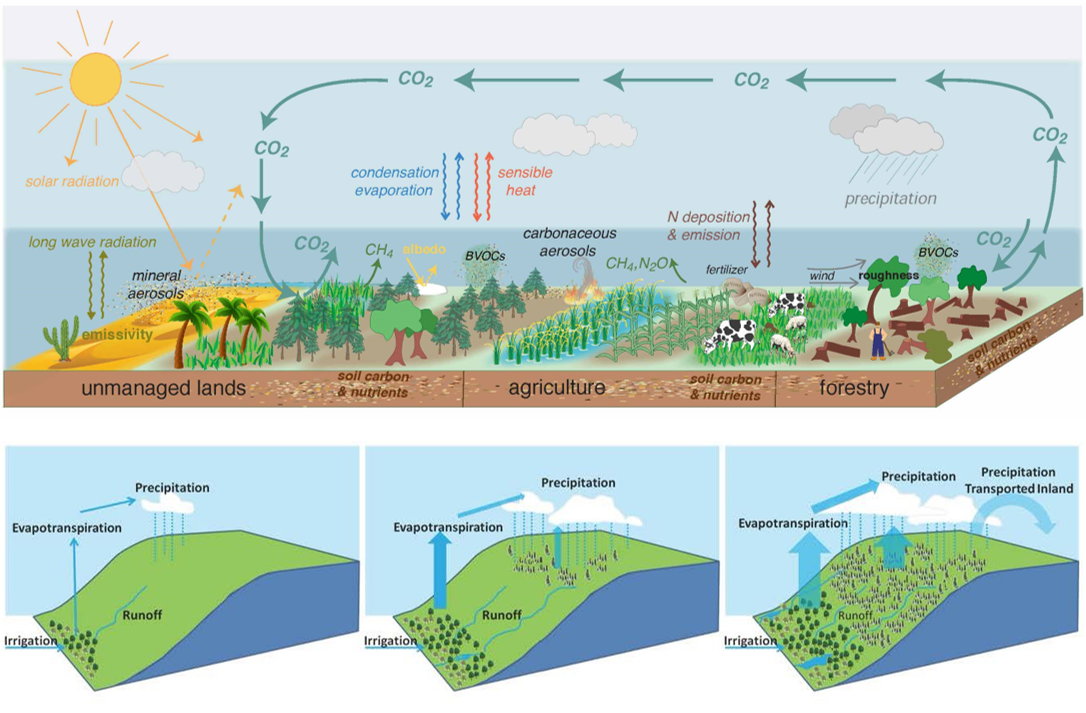
River basins are linked by land-atmosphere feedback.
We used three causal discovery methods (Granger Causality, Transfer Entropy, and PCMCI) to find causal links between river basins using their land and atmospheric variables. We found that river basins are already linked by land-atmosphere feedback. They have within-basin land-to-atmosphere connections (which represent evapotranspiration contributing to atmospheric moisture content), cross-basin atmosphere-to-atmosphere connections (which represent transport of water from one basin to another by winds), and within-basin atmosphere-to-land connections (which represent the change heat and water fluxes on land by atmospheric processes like precipitation, radiation, etc.).
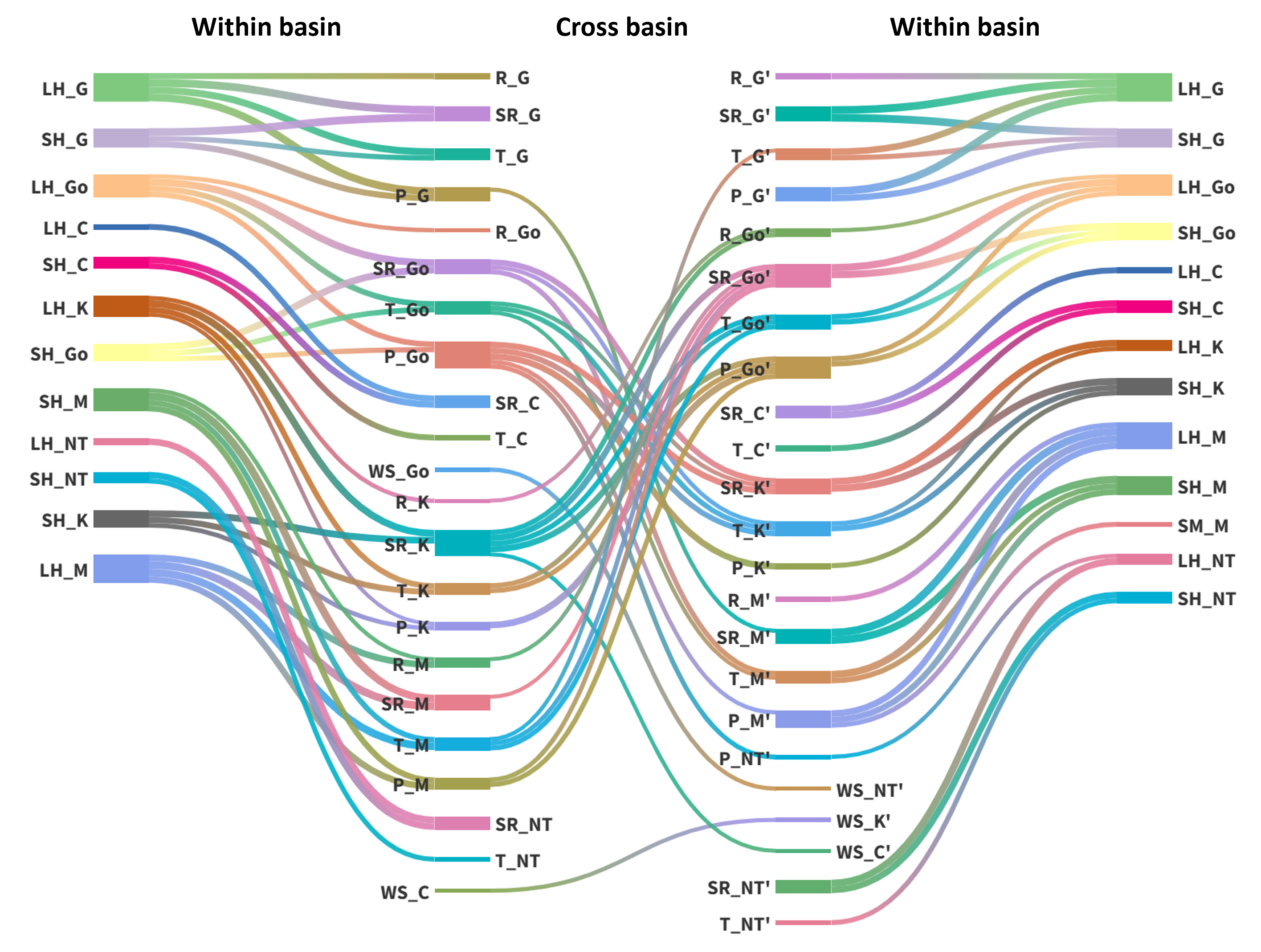
Sankey diagram showing within basin and cross basin links between land and atmosphere variables. Names are variable symbols followed by the basin they belong to for example, LH_G means latent heat flux from Ganga basin, and there is a link from Ganga to Mahanadi basin as LH_G→P_G→SR_M’→LH_M. (Chauhan et al. 2023).
Can land-atmosphere feedback from river interlinking affect the Indian monsoon?
When water is transferred physically from one basin to another for irrigation, this existing network between river basins gets perturbed. This perturbation can then cascade to all basins and even lead to changes in the spatial pattern of monsoon rainfall. We tested the above perturbation using a regional climate model (WRF-CLM4), using a modified irrigation module designed to represent India-specific irrigation practices and farmer behavior. The model simulations show a statistically significant change in the spatial patterns of the Indian monsoon. Maximum changes were observed during September, when the contribution of land-atmosphere feedback to the Indian monsoon was known to peak. During September, we observed an increase in rainfall of up to 10% in some parts of the Ganga, Godavari, and Krishna basins and a reduction in precipitation of up to 12% in some arid regions of the country.

What are the implications for river interlinking projects?
While an increase in rainfall in some basins is good news for water availability, it needs to be tested for extremes like flooding. The observed decrease in rainfall in arid areas is an unintended consequence of river interlinking, which needs to be incorporated while planning water transfers and multi-reservoir operations. The inter-basin water transfer projects present a promising solution amid rising water scarcity. However, to deliver the maximum benefits, management of these large-scale hydrological projects needs to incorporate complex land-atmosphere interactions using model-driven hypothesis testing and impact assessments.
This study was led by Prof. Subimal Ghosh and Tejasvi Ashish Chauhan from the Indian Institute of Technology Bombay, India, in collaboration with other scientists — Anjana Devanand (IIT Bombay, India, and UNSW, Sydney, Australia), Roxy Mathew Koll (IITM Pune, India), Karumuri Ashok (University of Hyderabad, India, and KAUST, Saudi Arabia).
Follow the Topic
-
Nature Communications

An open access, multidisciplinary journal dedicated to publishing high-quality research in all areas of the biological, health, physical, chemical and Earth sciences.
Related Collections
With Collections, you can get published faster and increase your visibility.
Women's Health
Publishing Model: Hybrid
Deadline: Ongoing
Advances in neurodegenerative diseases
Publishing Model: Hybrid
Deadline: Dec 24, 2025

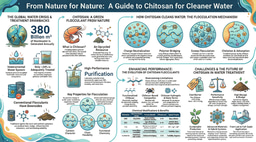

Please sign in or register for FREE
If you are a registered user on Research Communities by Springer Nature, please sign in